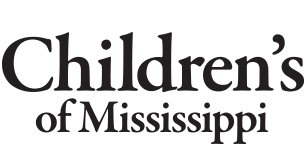I Want To
Contact Us
- For appointments by phone: (601) 984-2700 (Option 1)
- Make an Appointment
Children's Cancer and Blood Disorders
- Children's Cancer and Blood Disorders Home
- Bone Cancer
- Bone Marrow Transplant
- Brain and Central Nervous System (CNS) Cancer
- Germ Cell Tumors
- Hepatoblastoma
- Hodgkin's Lymphoma
- Langerhans Cell Histiocytosis
- Leukemia
- Neuroblastoma
- Non-Hodgkin's Lymphoma (NHL)
- Retinoblastoma
- Soft Tissue Cancer
- Wilms Tumor
- Children's Cancer Support Programs
Children's Brain and Central Nervous System (CNS) Cancer
Sometimes something small in the wrong place presents a big problem. That’s the case with brain and spinal cord tumors. When those tumors, small or not, show up, your child needs a team with vast experience and a big focus on their illness to help them recover. They’ll find it among the staff at the Children's Cancer Center at Children's of Mississippi. These doctors, nurses and other specialists treat children each year with benign and malignant brain tumors. The team, with training in pediatrics and neurological disorders, works with your child and your family to help your child regain a normal life.
Brain and spinal cord functions
Your child’s brain and spinal cord are part of the central nervous system which controls every aspect of life, thinking, learning, movement, speech, hearing and sight. Your child’s brain has three major parts - the cerebrum, the cerebellum and the brain stem. The spinal cord connects to the brain stem and runs down the center of your child's back. Messages travel between the brain and the rest his body via the spinal cord.
What does cancer do?
Cancer, the uncontrolled growth of cells, can cause big problems when it grows in a child’s brain or spinal cord. In general, cancers in children are rare. Brain and spinal cord cancers are the second most common type of cancer in children after leukemias.
When cancer grows, it may form a tumor which grows within the confined space of your child’s skull or spinal cord. Symptoms often are the result of that tumor pressing on other tissues, crowding the normal tissue in your child’s body. The difference between a malignant tumor and a benign or non-cancerous tumor is that cancer, if left untreated, can spread to other parts of your child’s body. But any tumor, benign or malignant, can cause major problems for your child, especially if it occurs within or near the central nervous system.
Some benign tumors are treated in the same manner as some malignant ones, so your child’s doctors may make no distinctions between them. Malignant or benign, a tumor in your child’s brain or spinal cord is a major illness and needs immediate treatment.
Types of central nervous system cancers
You’ll see lots of names of brain and spinal cord cancers. But here, your child's cancer care team will tell you the location may be as important as the type of cancer. In fact, doctors have identified some 200 types of childhood brain tumors.
The most common types to strike children are:
- Astrocytoma: These tumors form in cells called astrocytes and can be high-grade or low-grade. High-grade tumors tend to be fast growing and cancerous. Low-grade tumors are slower growing.
- Medulloblastoma: These tumors form in the cerebellum. This part of your child’s brain controls movement, balance and posture.
- Ependymoma: These tumors usually are slow growing and start in the cells that line the fluid-filled space inside your child’s brain and spinal cord.
Others that are less common include cervicomedullary tumors, choroid plexus tumors, craniopharyngioma, diffuse pontine glioma, dysembryoplastic neuroepithelial tumor, ganglioglioma, germ cell tumors of the brain, germinoma, gliomatosis cerebri, meningioma, non-germinomatous germ cell tumor, oligodendroglioma, optic pathway glioma, pleomorphic xanthoastrocytoma, primitive neuroectodermal tumors, atypical teratoid rhabdoid tumor, tectal gliomas and thalamic tumors.
Your child's care team
When cancer strikes your child’s central nervous system, you need a team of doctors, nurses, and other specialists with additional training in treating children with neurological disorders. You may hear the term “neuro-oncology clinic” which simply means your child will be treated by people who have the special training your child needs.
Children's Cancer Center has a pediatric neuro-oncologist, pediatric neurologists, pediatric neurosurgeons, and neurological specialists in pathology, radiology and radiation oncology. Other team members include nurse practitioners, nurses, palliative care specialists, child life specialists, psychologists and even families who have traveled this road. You will meet many members of your child’s team, but may never see others.
Team members meet every week to discuss your child’s case, progress and any new treatments or techniques that may help him. All are focused on helping your child and your family succeed against cancer.
What we do
Your child's cancer care team works with you and your family throughout your child’s treatment. At Children's Cancer Center, team members listen to you, talk to you and then talk to each other in an effort to provide the best and most seamless care possible. Our doctors, nurses and other specialists are involved every day in treating patients, teaching the next generation of caregivers and in doing research on how to better cure the very cancer your child may be battling. That means they stay up to date on the latest treatments and research available.
This team also knows that battling any disease is emotionally, physically and financially draining and do all they can to help. For example, when possible, they will try to arrange all your child’s appointments for the same day and try to have various specialists visit your child in one room, so you don’t have to roam across the hospital’s large campus. Treatment caters to your child with toys, movies and other distractions to help ease the boredom and fear that can accompany medical visits.
This team knows its first priority is curing your child’s cancer, but team members never forget they’re dealing with children. Needles will be a part of this healing process, but your child will get more hugs than shots from this team.
If you choose, a family that has been in your situation will contact you to offer social support and the wisdom of their experience. Your child’s care team also offers dozens of other support services your family and your child may use.



 UMMC
UMMC